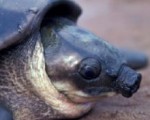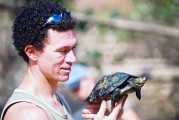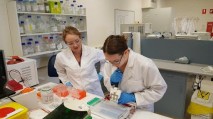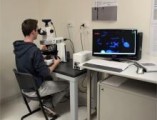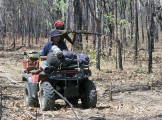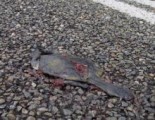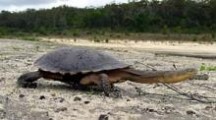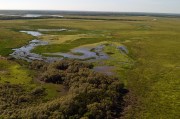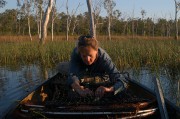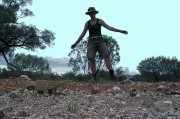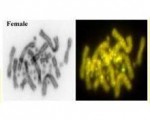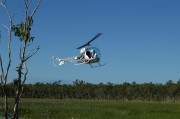 Those of you watching The Desolation of Smaug closely might have been surprised to see how quickly Smaug arose from his slumber when disturbed by Bilbo the Burglar.
Those of you watching The Desolation of Smaug closely might have been surprised to see how quickly Smaug arose from his slumber when disturbed by Bilbo the Burglar.
After all, hibernating mammals are deep in slumber, and take considerable time to wake, let alone function at a level needed to recognise and chase an intruder. During this sleep, the animals will not wake up when they hear a loud noise or even if they are moved or touched.
So how is it that dragon lizards (and members of the sister taxon to which Smaug belongs) can arouse from their winter slumber almost immediately after they are disturbed, and become quickly alert if temperatures are conductive to activity?
Hibernation is a physiological state of many animals during prolonged adverse environmental conditions, typically associated with winter.
Large changes in metabolism and cellular function occur during hibernation, with many stress response pathways modulated to tolerate physiological challenges that might otherwise be lethal.
The molecular mechanisms of mammalian hibernation are well studied, but this is not so for reptiles. In our recent paper in BMC Genomics, we examine gene expression in the Australian central bearded dragon late in hibernation, 2 days post-arousal and 2 months post-arousal.
We identified differentially expressed genes in all tissues between hibernation and post-arousal timepoints. There were 4,264 genes in brain that showed changes in expression between hibernation and post-arousal, 5,340 in heart and 5,587 in skeletal muscle.
Tissue-specific analyses revealed enrichment of protective mechanisms in all tissues during hibernation, including neuroprotective pathways in brain, cardiac hypertrophic processes in heart, and atrophy protective pathways in skeletal muscle. These changes are presumably to improve survival during the cold months.
One finding was of particular note. There was also enrichment of miRNA-mediated translational repression machinery, a process that allows for rapid and energy efficient reactivation of translation from mature mRNA molecules at arousal. In short, the molecular mechanisms operating in the dragon during hibernation are primed for a rapid response to arousal.
This presumably explains why Smaug was able to quickly arouse and respond to the insult of Bilbo Baggins intruding into the dragon's treasure trove, and is of no doubt of similar value to our central bearded dragon.
You can read the full paper as open access.
For further information, contact lead author Alex Capraro at a.capraro@unsw.edu.au
